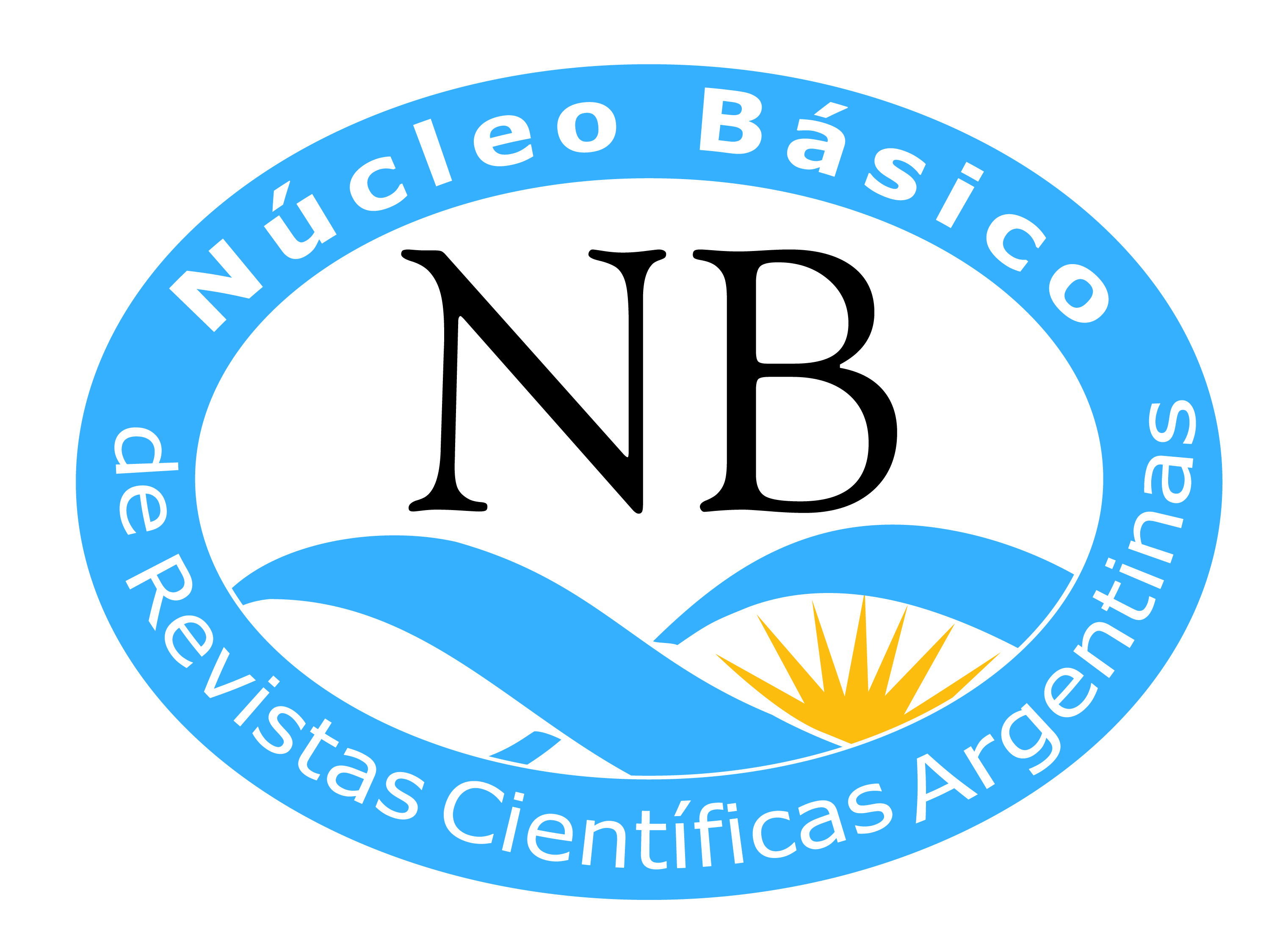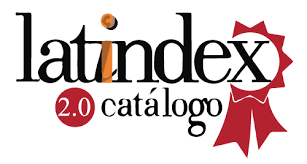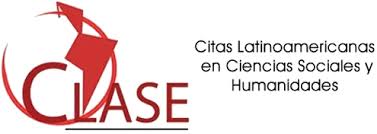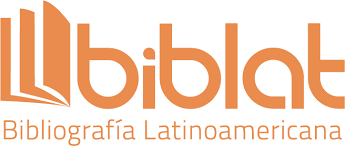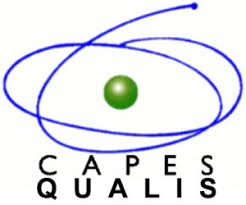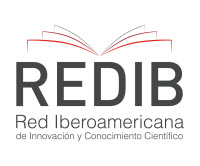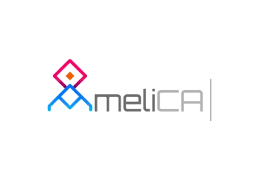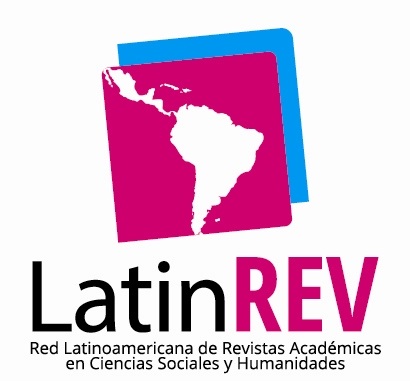Submissions
Submission Preparation Checklist
As part of the submission process, authors are required to check off their submission's compliance with all of the following items, and submissions may be returned to authors that do not adhere to these guidelines.- The submitted work is original, unpublished, and is not under simultaneous review in another publication.
- There are no conflicts of interest related to the submission of this manuscript. If there are any, I have disclosed them to the Editor.
- The file extension is .doc or .docx. The page size used is A4, with 2.54 cm margins (bottom, top, left, and right).
- The font used is Times New Roman, size 12, left-aligned (not justified). The line spacing of the text is double (including for bibliographic references), and a 5-space indentation is used for all paragraphs.
- The pages are consecutively numbered in the bottom right margin.
- The anonymous cover page (the first page of the manuscript) contains no information about the authors to preserve the review process.
- The character count with spaces of the manuscript and the submission elements match the requirements outlined in the Author Guidelines.
- The writing style, titles, citations, and the reference list at the end of the manuscript follow APA 7th edition guidelines.
- URLs or DOIs for the references are provided, when possible.
- The tables and figures are located after the References section. Each one is numbered and has a title. [If your article does not contain tables or illustrations, please mark this item anyway].
- The exact location where the tables and figures will be inserted is indicated in the manuscript. [If your article does not contain tables or illustrations, please mark this item anyway].
Author Guidelines
1. Submission of Originals
Revista IRICE accepts original and unpublished works in Spanish, Portuguese, and English. All submissions must be presented in Microsoft Word format, with an A4 page size and 2.54 cm margins (bottom, top, left, and right). The manuscript should be written in Times New Roman, size 12, left-aligned (not justified), with a 5-space indentation in all paragraphs and double line spacing. Pages will be consecutively numbered in the bottom right margin.
2. Length of the Manuscripts
- Articles and essays: 40,000 to 60,000 characters with spaces in total (including abstracts, keywords, graphics and tables, references)
- Book reviews, event reviews, and interviews: 8,000 to 15,000 characters with spaces.
3. Submission Elements
a- Cover Page
The cover page must be submitted as a separate file to preserve the anonymity of the authors during the manuscript review process. The following information should be included in this document:
- Title of the manuscript in the original language, in bold, with the first word capitalized and centered (it should not exceed 15 words).
- Translation of the title: If the original title is in Spanish, a translation into English should be added; if the original title is in Portuguese, a translation into Spanish and English should be added; if the original title is in English, a translation into Spanish should be included.
- Full name(s) of the author(s). These should be presented on separate lines, left-aligned. Below the name, include a footnote (marked with an asterisk) specifying the author's latest qualification and the institution granting the degree (in full and abbreviation), position, and institutional affiliation (in full and abbreviation). If applicable, include the funding source for the study in a separate paragraph.
- Institutional affiliation: Left-aligned, in the line following the author's name, indicate the full institutional affiliation, followed by the country, separated by a comma.
- ORCID: On the following line, left-aligned, include the full URL. If you do not have an ORCID, please register at https://orcid.org/register.
- Email: Indicate this as in the previous cases, on a separate line, left-aligned.
- Brief CV of up to 200 words using 2.54 cm margins (bottom, top, left, and right), Times New Roman, size 12, left-aligned (not justified), with a 5-space indentation in all paragraphs, and double line spacing.
- Author Contribution: Revista IRICE adheres to the identification of the fourteen (14) categories defined by CRediT (Contributor Roles Taxonomy) for works submitted for publication, in order to provide credit to all roles involved in the research process and ensure they are recognized and acknowledged during the communication of results. These categories are:
- Project Administration: Responsibility for managing and coordinating the planning and execution of the research activity.
- Fund Acquisition: Acquisition of financial support for the project leading to this publication.
- Formal Analysis: Application of statistical, mathematical, computational, or other formal techniques to analyze or synthesize study data.
- Conceptualization: Ideas, formulation, or development of research objectives and goals.
- Data Curation: Activities related to managing, annotating (producing metadata), cleaning, and maintaining research data during its use and reuse phases (including writing software code where necessary to interpret data).
- Writing - Review & Editing: Preparation, creation, and/or presentation of the published work by the research group, specifically, critical review, comments, or revisions, including pre- and post-publication stages.
- Investigation: Development of a research process, specifically experiments or data collection/testing.
- Methodology: Development or design of methodology, creation of models.
- Resources: Provision of study materials, reagents, equipment, patients, laboratory samples, animals, instrumentation, computing resources, or other analytical tools.
- Writing - Original Draft: Preparation, creation, and/or presentation of the published work, specifically drafting the initial manuscript (including, if applicable, translation work where relevant to the volume of translated text).
- Software: Programming, software development, designing computer programs, implementing code and supporting algorithms, testing existing code components.
- Supervision: Responsibility for overseeing and leading the planning and execution of the research activity, including external mentoring.
- Validation: Verification, either as part of the activity or separately, of the general replicability/reproducibility of the results/experiments and other research findings.
- Visualization: Preparation, creation, and/or presentation of the published work, specifically visualizing/presenting data.
Below is the format for presenting the author roles in the manuscript, the "Author Contribution" table, which should be included after the brief CV.
| Author Contribution | ||||||||||||||
| Names and surnames of the authors | 1 | 2 | 3 | 4 | 5 | 6 | 7 | 8 | 9 | 10 | 11 | 12 | 13 | 14 |
| AUTOR 1 | x | x | x | x | x | x | x | x | x | x | ||||
| AUTOR 2 | x | x | x | x | x | x | x | x | x | |||||
1- Project Administration; 2- Fund Acquisition; 3- Formal Analysis; 4- Conceptualization; 5- Data Curation; 6- Writing - Review/Editing; 7- Investigation; 8- Methodology; 9- Resources; 10- Writing - Original Draft; 11- Software; 12- Supervision; 13- Validation; 14- Visualization.
b- Manuscript Text with Anonymous Cover Page
Anonymous Cover Page:
- Title of the manuscript in the original language (It should not exceed 15 words).
- Translation of the Title (As indicated in the "Cover Page" section).
This cover page will be submitted to the double-blind peer review system used by the journal, therefore it should not include any information that refers to the authors.
Abstract and Keywords:
Each title, whether in the original language or translation, must be accompanied by an abstract and keywords (in Spanish, Portuguese, and English, depending on the case). The title "Abstract" should be left-aligned and in bold. The length of each abstract should be between 150 and 250 words. The title "Keywords" should immediately follow each abstract, italicized, and followed by a colon (:). A list of 4 or 5 keywords should be provided, separated by commas, in lowercase (except for proper nouns), with no period at the end.
Tables and Figures:
Tables should be presented at the end of the manuscript, after the "References" section, numbered in the order of appearance with Arabic numerals (e.g., Table 1, Table 2, etc.), followed by a clear title at the top. The authors must indicate the exact location in the body of the text where the tables will be inserted (e.g., [Insert Table 1]). Furthermore, the tables must be created using the word processor, and image formats will not be accepted for submission. Each table should clearly indicate the sources from which the data was derived.
Figures refer to illustrations such as graphs, diagrams, maps, drawings, and photographs. Like the tables, figures should be consecutively numbered according to the order in which they appear in the text (e.g., Figure 1, Figure 2, etc.) and their insertion locations should be precisely indicated in the manuscript (e.g., [Insert Figure 1]). Authors should include titles or descriptive captions for each image at the end of the text, after the "References" and "Tables" sections, accompanied by the number identifying each figure. For images sourced from public repositories or archives, their origin must be indicated.
When the illustrative material in the manuscript comes from a protected source, the original author and the copyright holder must be credited, and written permission to use the material must be obtained. The acceptable file formats for submission are .png, .tif, or .jpg, with a resolution of at least 300dpi.
Revista IRICE reserves the right to decide on the inclusion or exclusion of tables and figures for reasons of length and design.
4. Writing Style
Revista IRICE follows the guidelines of the publication style manual of the American Psychological Association (APA 7th ed.), and the general writing of the manuscript, in-text citations, and reference list should conform to these guidelines.
a- Heading Levels
Heading levels should follow the guidelines established by the APA 7th Edition Style Manual, as outlined below.
|
Level |
Format |
|
1 |
Centered, boldface |
|
2 |
Left-aligned, boldface |
|
3 |
Left-aligned, boldface, italic |
|
4 |
|
|
5 |
|
b- Citations and Paraphrases
All citations of ideas or texts from other authors –whether direct or indirect– must be included in the reference list. Bibliography that does not refer to citations made in the article should not be included in this list.
Direct or textual citations are word-for-word transcriptions from a text. They must include the author's last name, the year of publication, and the page number(s). Use ellipses in parentheses (...) to indicate omitted words or phrases, unless they are at the beginning or end of the citation. Use square brackets for additions or explanations that are not part of the cited author’s text. When reproducing originals that contain spelling errors, place the expression [sic] in italics and in square brackets after the error.
Direct citations of fewer than 40 words: When the citation has fewer than 40 words, it should be written within the text in quotation marks and without italics. The period should be placed after the reference information at the end of the citation. In the following examples, the bolded text is for better visibility and does not apply to the manuscript.
Example of a citation based on the text:
It is not so much about crafting a discourse on the present or absent students, but rather about an ethics regarding their existences; it is not so much about a purported and elusive homogeneity or diversity, but about "opening a space within the norm for the other to emerge" (Barcena, 2008, p. 11).
Example of a citation based on the author:
Hence, the recording of discourses and practices of the subjects through in-depth interviews, observation records with participation in various physical and virtual contexts, using instruments from the qualitative approach, proved to be highly appropriate; following Vasilachis (1993): “Qualitative research constitutes, then, a particular tradition in the social sciences that fundamentally depends on the observation of actors in their own terrain and interaction with them in their language and on their own terms” (p. 58).
Direct citations of more than 40 words: When the citation has more than 40 words, separate it into a new paragraph, with indentation, single spacing, and without quotation marks. Do not use italics. The period should be placed before the reference details at the end of the citation.
Example of a citation based on the text:
In a differentiated form, communicative interactivity is conceived from the dialogical relationships between users.
In selective interactivity, there is an individual who asks or chooses an option, and the system responds automatically; in communicative interactivity, there is a sender and a receiver who can exchange roles. In the first case, the number of possibilities the system has to respond is—at least in most cases—limited or sometimes only one; while in the second option, the interaction is unpredictable, meaning the possibilities for response are infinite due to the human characteristics of the interactants. (Rost, 2004, p. 6)
Example of a citation based on the author:
As Larrosa (2006) aptly writes:
Two dominant languages have been configured in the educational field: the language of technique and the language of critique (...). On one hand, the language in which what we are told exists is stated, what we are told is (...). On the other hand, the language in which what we are told should exist is stated, what we are told should be. (p. 30)
Indirect or paraphrased citations refer to ideas and concepts from another author that are not quoted verbatim. Include the author's last name and the publication year in parentheses.
Example of an indirect citation based on the text:
In the absence of another (subject) who challenges, can critical judgment be developed? These debates have mainly focused on the critique of closed software products intended for teaching or instructional designs using ICT within the framework of Distance Education that only proposed the transmission of content (San Martín & Guarnieri, 2009).
Example of a citation based on the author:
Silva (2005) explains that the term interactivity is divided between authors who consider it only as the individual-machine relationship and those who believe it is the individual-individual relationship mediated by telematics.
Citation of secondary sources (citation of a citation): Use secondary sources only when the original work is unavailable or inaccessible through regular sources. Indicate the secondary source in the reference list; in the text, mention the original work and place the secondary source citation in parentheses, preceded by the phrase "cited in."
Example:
Penrose (cited in Hawking, 2010) believes that mathematics...
c- Citation of references in the text
As seen in the previous examples, citations within the text are referenced using an author-date system, which must align with the alphabetical reference list located at the end of the paper.
Multiple authors' works:
A work by two authors: When citing a work created by two authors, separate their last names with "&" and cite both each time they appear in the text.
- Liporetsky and Serroy (2009) express...
- ... and more from the formation and generational differentiation through digital means (Howe & Strauss, 2000).
A work by three or more authors: When the citation refers to three or more authors, include the name of the first author followed by "et al." from the first mention.
- Reimers et al. (2009) assert that it has been demonstrated in several experiments.
- This circumstance has been demonstrated in several experiments (Reimers et al., 2009).
When several works by three or more authors with the same publication year are shortened in the same way, it can cause ambiguity in the citation. To avoid this, include as many authors as necessary to distinguish the works. Example:
-
Kapoor, Bloom, Montez, Warner, and Hill (2017)
-
Kapoor, Bloom, Montez, et al. (2017)
-
Kapoor, Bloom, Zucker, Tang, L'Enfant, Kim, and Daly (2017)
-
Kapoor, Bloom, Zucker, et al. (2017)
Corporate author:
In these cases, the last name is replaced by the name of the organization, which should be written out fully, with the acronym in parentheses. For subsequent citations, only the acronym will be used.
- According to the Oficina Nacional de Tecnologías de la Información (ONTI, 2010)
- ... web accessibility standards... (Oficina Nacional de Tecnologías de la Información [ONTI], 2010).
Anonymous author:
For the citation reference, use the first few words from the entry in the reference list (usually the title). If it is an article, book chapter, or web page, use double quotation marks. If it is a journal, book, or report, use italics.
- ... unfavorable environmental conditions” (“La Universidad de La Pampa,” 1961, p. 22).
- ... the enormous potential wealth of the province” (Lympha, 1961, p. 23).
When the author of a text is listed as anonymous in the reference list, use the word "Anonymous" followed by a comma and the year in parentheses. Example: (Anonymous, 2010).
Classical works:
If the publication date of the work being cited differs significantly from the original publication date, place the original date in parentheses, followed by a slash (/) and the date of the version consulted.
- James (1890/1983)
Two or more works cited within the same parentheses:
When citing more than one work in the same parentheses, arrange the authors' last names alphabetically as they appear in the reference list, separating them with a semicolon (;). Organize works by the same author by publication year using commas (,). Cite works without a date (n.d.) first, and works that are in press last. When citing works by the same author from the same year, identify the works with letters placed immediately after the publication year.
- ... educational policies oriented toward the rural sector (Ascolani, n.d., 2014, 2015; Gutiérrez, 2007, in press; Plencovich et al., 2009)
- ... that language itself reveals while also concealing (Foucault, 1968, 1981, 2003)
- ... that often carries heritage (Kriger & Dukuen, 2017a, 2017b)
Interviews:
Interviews used as sources can be classified into three categories:
- Published interviews: They should retain the citation and reference format according to the type of resource (journal, newspaper, YouTube video, etc.). The name of the interviewee may not be mentioned in the reference; in this case, you can include their name in the narrative of the work.
- Interviews or personal communications: These are interviews conducted with individuals not involved in the research, for example, an interview with an author. This category can also include emails, text messages, phone conversations, classes, letters, and discussions not archived in forums, among others. Since this is an irreplaceable source, this type of information should not be included in the reference list but must be cited within the text. The following is an example of this case:
- A. Last name of the interviewee (personal communication, day and month, year )
- A. M. Lassalle (personal communication, October 7, 2015)
- (A. A. Last name of the interviewee, personal communication, day and month, year)
- (A. M. Lassalle, personal communication, October 7, 2015)
- Interviews with research participants: These are presented just like other citations (in quotes for those under 40 words, without quotes and as a block quote for those of 40 words or more). Do not include them in the reference list, nor treat them as personal communications. Respect confidentiality and anonymity agreements for participants, using pseudonyms if necessary.
d- Footnotes
Footnotes can be used to clarify or expand concepts, add additional content, or suggest complementary material. Care should be taken to ensure that footnotes are not excessively lengthy. If they are, it is recommended to incorporate those concepts into the main body of the text.
e- Reference List
All authors cited within the body of a text or work must match the reference list. An author should never be referenced without being cited in the text and vice versa. The reference list should be organized alphabetically using a hanging indent format. When a referenced work has more than 20 authors, list the first 19 followed by an ellipsis (...) and then the final author's name. Below are some examples that may appear in a reference list:
Books:
Basic format:
- Last Name, A. A. (Year). Title. Publisher.
- Abramowski, A. (2010). Maneras de querer. Los afectos docentes en las relaciones pedagógicas. Paidós.
Book with an editor (chapters written by different authors):
- Last Name, A. A. (Ed.). (Year). Title. Publisher.
- Wilber, K. (Ed.). (1997). El paradigma holográfico. Kairós.
Electronic Version of a Book:
- Last Name, A. A. (Year). Title. http://www.xxxxxx.xxx
- Romañach, J., & Lobato, M. (2005). Diversidad funcional, nuevo término para la lucha por la dignidad en la diversidad del ser humano. http://www.forovidaindependiente.org/files/documentos/pdf/diversidad_funcional.pdf
Book with a DOI (Digital Object Identifier):
- Last Name, A. A. (Year). Title. https://doi.org/xxxx
Book Chapter:
A book chapter is referenced when the book has an editor or compiler, or when it consists of chapters written by different authors.
- Last Name, A. A., & Last Name, B. B. (Year). Title of the chapter. In A. A. Last Name (Ed.), Title of the book (pp. xx-xx). Publisher.
- Litwin, E. (1996). El campo de la didáctica: la búsqueda de una nueva agenda. En A. Camilloni et al. (Eds.), Corrientes didácticas contemporáneas (pp. 91-115). Paidós.
Periodical Publications:
Basic format:
- Apellido, A. A., Apellido, B. B., & Apellido, C. C. (Fecha). Título del artículo. Nombre de la revista, volumen(número), pp-pp.
- Browne, C. A., & Woolley, J. D. (2001). Theory of mind in children’snaming of drawings. Journal of Cognition and Development, 4(2), 389-412.
Online article:
- Apellido, A. A. (Año). Título del artículo. Nombre de la revista, volumen(número), pp-pp. http://......
- Mingolo, W. (2005). La razón postcolonial. Herencias Coloniales y Teorías Poscoloniales. AdVersuS, 2(4). http://www.adversus.org/indice/nro4/articulos/articulo_mingolo.htm
Articles with DOI:
- Apellido, A. A., Apellido, B. B., & Apellido, C. C. (Fecha). Título del artículo. Nombre de la revista, volumen(número), pp-pp. https://doi.org/xxx
- Soldatic, K. & Grech, S. (2014). Transnationalising disability studies: Rights, justice and impairment. Disability Studies Quarterly, 34(2). http://dx.doi.org/10.18061/dsq.v34i2.4249
Newspaper or Daily. Basic format:
- Last name, A. A. (Date). Title of the article. Newspaper Name, pp. xx-xx.
- Santos Guerra, M. A. (25 de mayo de 2019). Las escuelas flotantes del Paraná. La Capital, 25-26.
Online Newspaper or Daily:
- Last name, A. A. (Date). Title of the article. Newspaper Name. Retrieved from http://......
- Santos Guerra, M. A. (May 25, 2019). Las escuelas flotantes del Paraná. La Capital. Retrieved from https://www.lacapital.com.ar/educacion/las-escuelas-flotantes-del-parana-n2501819.html
Other texts:
Technical and Research Reports:
- Last name, A. A. (Year). Title of the work (Report No. xx). Location: Publisher.
Corporate Author Report, Government Report:
- Name of the organization. (Year). Title of the report (Publication No.). https://www.xxxxxx.xxx
Conference Proceedings and Symposiums:
For referencing regularly published conference proceedings or symposiums, use the format for periodical publications. If the proceedings are not regularly published, use the format for books or book chapters. For unpublished works, use the following format:
- Last name, A. A., & Last name, A. A. (year, month). Title of the paper or poster. Paper or poster session presented at the conference... of Name of the organization, Location.
Doctoral and Master's Theses:
- Last name, A. A., & Last name, A. A. (Year). Title of the thesis (Undergraduate, Master's, or Doctoral thesis). Name of the institution, Location.
If it is an unpublished thesis, add the word "unpublished" in parentheses.
Compilations and archival documents:
Basic format:
- Last name, A. A. (year, day, month). Title of the material [Description of the material]. Name of the compilation (Classification No., Box No., File Name, etc.). Name and location of the repository.
The referenced information may vary depending on the archive. Provide as much information as possible.
Repository letter:
- Last name, A. A. (year, day, month). [Letter to...]. Name of the compilation (Classification No., Box No., File Name, etc.). Name and location of the repository.
Private compilation letter:
- Last name, A. A. (year, day, month). [Letter to...]. Copy in possession of ...
Recorded interview available in archive:
- Last name of interviewee, A. A. (year, day, month). Interview with A. Last name [Audio]. File Name, Location.
Copyright Notice
Authors who have publications with this journal agree to the following terms:
- Authors will retain their copyright and grant the journal the right to first publication of their work, which will simultaneously be subject to the Creative Commons Attribution-NonCommercial-ShareAlike 4.0 International License (CC BY-NC-SA 4.0).
- Authors may adopt other non-exclusive distribution agreements for the published version of their work (e.g., deposit it in an institutional repository or publish it in a monographic volume) as long as the original publication in this journal is acknowledged.
- Authors are encouraged and allowed to disseminate their work via the Internet (e.g., in institutional repositories or on their personal website) before and during the submission process, which can lead to interesting exchanges and increased citations of the published work. (See The Effect of Open Access).
Privacy Statement
The names and email addresses entered in this journal will be used exclusively for the stated purposes of the journal and will not be made available to third parties or used for any other purpose.

